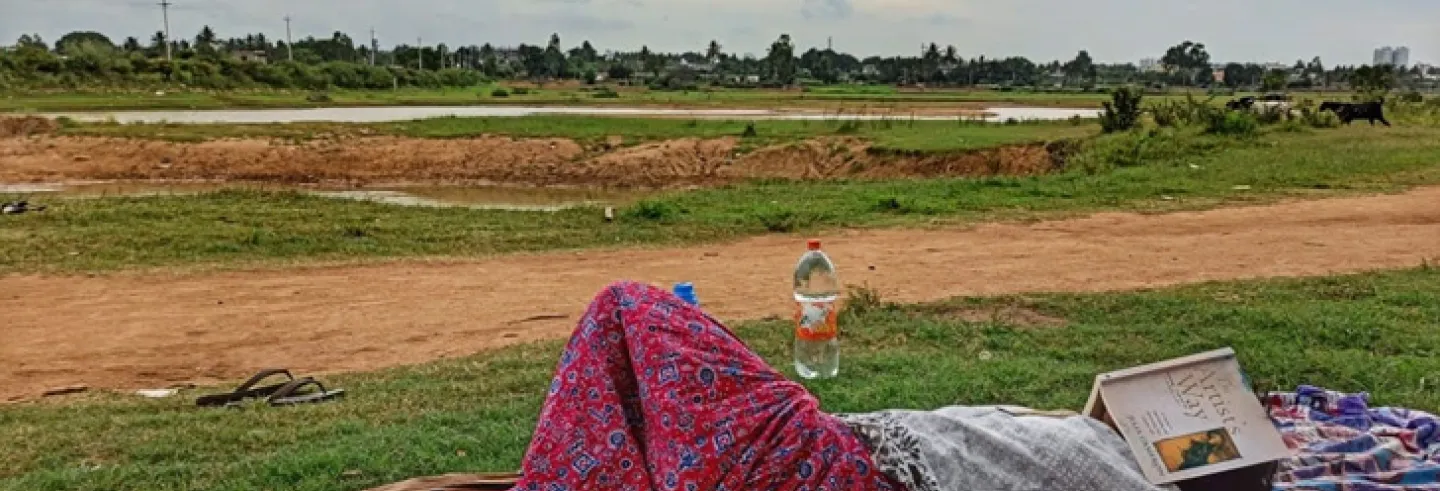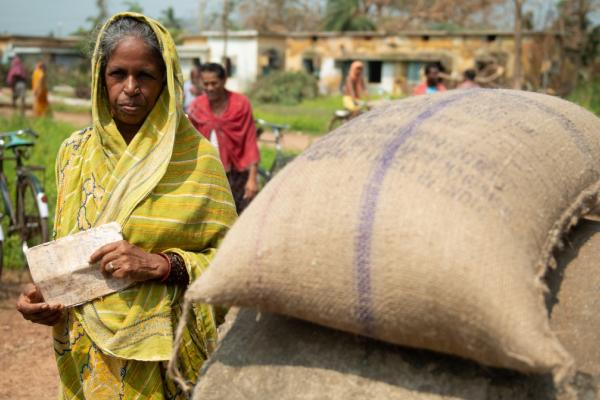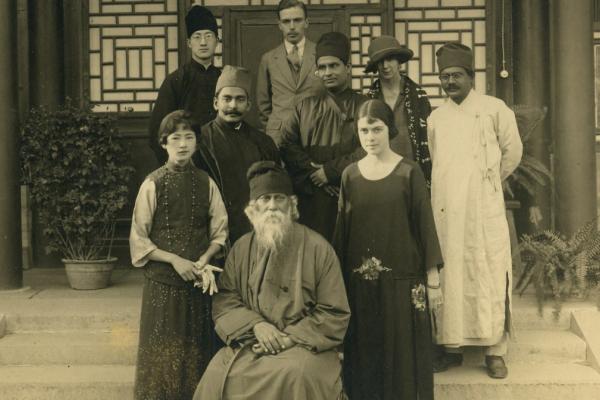A woman at leisure is a rare sighting. Snatched at moments of rest between responsibilities, leisure marks the absence of prescribed duties and emerges as a space for expressing and curating subjecthoods beyond impositions and dictations.
Surabhi Yadav’s Instagram-based photo-project Basanti: Women at Leisure makes visible women’s leisure in all of its glorious heterogeneity. Surabhi writes about the “goddesses of small things” who find leisure beyond straitjacketed renderings of emancipation. In her work, women wash themselves off definitions which require them to act in this way or that, and are seen splayed out in the sun with a book-covered-face quieting the harsh rays, painting their toenails, posing meticulously for a candid picture, or simply letting down their hair while plonked up on a tree.
This representation chronicles the ordinariness of desires and marks it as rare, even as it shows just how insidiously oppression eats at the most basic of rights and attempts to hollow out communities. This archiving allows for the ordinary to be potent and affords women the ease of being.

How one unwinds and strips off impositions is a remarkably personal process. It is a site for moulding one’s identity where individuals are active agents, fashioning their hours off the clock in ways their own. Spaces of leisure can and have been culled out of inhospitable environments even though social, cultural and economic prejudices pose themselves as formidable hurdles. Leisure when thought of as a demand for space brings with it, perforce, the right to mould that space to one’s own preference.
Safe and accessible public spaces would allow for women to slip away from households and engender experiences wholly novel, serving as a point of congruence for different women. But women’s mobility is constricted in spheres outside the private, robbing them of zones of socialisation and solidarity. Movement is shorn off its plenitude and unworried ambles are supplanted by constant vigil. The policing of women’s bodies is rampant. Spaces remain unsafe and hostile towards women.

The freedom with which men occupy spaces is frowned upon when embodied in women. Groups that have historically been discriminated against are usually on the lower rung of resource allocation which includes time and money, making leisure a luxury.
***
Any understanding of leisure must allow for women in their myriad shades, in order to reveal how intricately leisure is tied to subjecthoods and their expressions. There cannot be a monolithic understanding of leisure, or didactic lines modelling the ideal woman relishing the ideal leisure.

For women leisure in different ways: some worship, others indulge in online zumba sessions; some paint, others sew. What glues all these diverse experiences together is the joy, the agency flanking their acts which are the chronicles of everyday lives of aam-aurats and their desires. Women indulge in taking care of themselves and emerge as individuals, not merely as subjects seen in relation to others.
***
Leisure, like work, is a product of social relations and is premised on how structures of power have been forged and sustained. Housework has usually never merited the clarion call for “8 hours of what you will.” Women who do both paid work and household chores are caught extremely time-poor. Housework melts into perpetual tasks leaving little or no time for leisure. The non-recognition of female labour within households and beyond both fetters and frustrates attempts at carving out time for one’s own selfhood.

Questions about who rests and how are inextricable from the socio-political frameworks embedded in society and an individual’s position within this nexus. Labour continues to be understood largely through masculinist tropes. Men and their usually visibilized labour are deemed worthy of the rest they can glean within homes and in public spaces- as they should. But housework is rarely considered to be labour enough and hence women, whether employed or a house-maker, must unrelentingly run household units without making claims to rest.
***
Within such social norms and understandings leisure for women could only reek of corruption and be redolent with derogatory connotations. The idle woman is a dangerous figure, and is best replaced by the ever industrious, all-knowing woman.
In eloquently depicting leisure, Surabhi’s project prises it out of slanderous undertones. Leisure is rendered familiar when drawn out of lofty rhetoric, bringing with it an un-exoticised documentation of women in their ordinariness. One begins to pay heed to the everyday and critique it. It catches one off guard, as one wonders why pictures of women claiming their space in simple ways continue to be so strikingly unusual.

How does a woman leisure when she cannot afford the neat compartmentalisation of private spas and holiday resorts? How often are our street corners filled with women lolling around with no particular objective? The apparent lack of accessible resources makes moments of leisure gloriously radical, even as they press forth a critique of exclusionary models of development and progress. Women are seen claiming their spaces and refusing to compromise themselves for grander narratives. No rhetoric of the greater good is to be a salve anymore.
***
One of the starkest threads in this project’s pictures is that neither labour nor leisure is depicted in merely masculinist terms. It does not only critique caste patriarchies, but also dismisses the rhetoric which idolises apparently unceasing labour in the name of enterprise or meritocracy. Leisure is lured out of clubs and resorts, and made at home in luxuriant fields, in balconies facing sunsets, under giant peepal trees, a rocky riverside or juice and ice-cream corners.

The demand for leisure and its deliberate eking out bares to the readers the structural barriers which obstruct women’s spaces. In cataloguing women’s leisure, one sees its dearth. While documenting leisure beyond the symbolics of capitalism, it delineates the lack of rudimentary and robust sites which allow ease of access and are inclusionary. A stroll at night is reduced to a luxury one can rarely venture into when faced with threats endangering safety.
***
Intermittently, Women At Leisure features pictures of ‘Women Waiting’ where they wait “to look freely into a stranger’s eye,” “for being recognised for her labour in building and maintaining a home,” “to experience the world without the burden of fear.” And “to form a collective that writes new religious rituals.” An acknowledgement of the daunting ground yet to be covered, this prompts enquiries into systemic structures and ideological forces which sustain women’ oppression.

The video that drew me to Surabhi’s Instagram page was of two girls and a woman giggling. They had invented a game called ‘jodo panch’. As they fumbled through the rules, both the winner and losers were bent double with glee and bursting into giggles. “Hum tumhari maa hai,” (I am, after all, your mother), the winner triumphantly explained her victory to her daughters. Another rush of laughter followed, rupturing the quiet. I continue to be amused at how rare these moments and their representations are, where women are simply occupying their space without diminishing themselves for any dictum or rule.
This photo project is an ode to women, to their spirit and their selves. Women work towards reclaiming their spaces and coin new meanings of power. These are moments which are salvaged and rare. And utterly lovely.
Photographs by Surabhi Yadav. Her photo project 'Women at Leisure' is a multimedia repository of photos and videos of women and girls relaxing and spending time at leisure. She also runs a social enterprise called 'Sajhe Sapne'.









